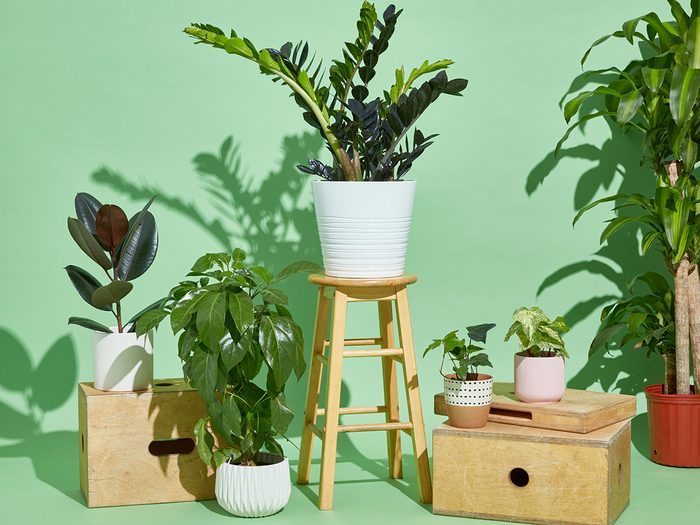A Guide to the Best House Plants, According to Science

Here's what your plant babies can (and can't) do for your health.
Thirty years ago, a couple enterprising scientists from NASA decided to investigate whether a class of pollutants called volatile organic chemicals—found in common products like paint, nail polish and shampoo—could be removed from the air by indoor house plants. Results looked good: In just 24 hours, English ivy, for example, seemed to absorb two-thirds of the formaldehyde it encountered. NASA was chuffed. “If man is to move into closed environments, on Earth or in space,” the report declared, “he must take along nature’s life support system.”
The study propagated a thousand articles about the air-purifying potential of indoor plants. There was just one problem: These experiments worked in super-closed environments, like an airtight lab or, you know, a rocket ship. But man currently lives in something a little larger, and to replicate these effects in your own home, researchers estimate you’d need to deposit roughly 10 plants into each square foot.
Still! Don’t go dumping your ferns just yet. While plants might not meaningfully transform the air quality of your semi-detached, they do offer a host of health benefits that could help both professionally (concentration, creativity) and personally (composure, stress relief). Better still, you don’t have to blast off in a spacecraft to reap these rewards.
Of course, some academic papers tend to be a tad vague about which exact house plant they used in, say, their big productivity experiment, and that doesn’t help much on a trip to the garden store. That’s why we scoured the journals to find specific, science-backed recommendations—so you can tailor your set-up to whatever perk you need. Read on to see which studies plant the right seed.
(Related: 4 Times in Your Life You Should Definitely Be Using an Air Purifier)
Large, leafy plants
In one study of UK office workers, researchers scattered around “an array of green, large-leafed plants” with an average height of 3 feet—at least two of which were in the direct sightline of each desk. After just three weeks, the academics from four universities in Australia, the UK and the Netherlands determined that workers were 15 percent more productive in a green space.
Those same academics repeated their experiment in both a Dutch call centre and a large British consultancy firm, finding that plant life increased self-reported levels of workplace satisfaction and concentration—which might be handy if the pandemic has wreaked havoc on your attention span.
Corn plant
A small Japanese study found that participants in a work-association task came up with more creative answers sitting next to a five-foot-high massangeana dracaena (or corn plant) than they did in an empty room. Plant-adjacent participants also showed more creativity than those who—and it gives us no pleasure to report this—completed their task next to a stack of magazines instead.
ZZ Plant
Nobody likes a hospital waiting room—but for Dutch patients with an appointment in the radiology department, the mere presence of a Zamioculcas (or ZZ plant) led them to report lower levels of stress.
Ivy
Boost your energy or provide tranquility? Get you a plant that can do both. An Egyptian study found that hedera helix (or English ivy) affected different emotions based on the colour of its leaves. Bright green and greenish-yellow varieties were associated with feelings of calm and comfort, while reddish or darker green leaves lent a bit more oomph.
Ficus
The Royal Horticultural Society and the University of Reading held a beauty contest, and one plant ran away with it: The Ficus benjamina (or weeping fig) had the greatest impact on respondents’ feelings of well-being. Still, researchers noted that any lush green plant with a rounded canopy should provide an emotional lift.
Pilea, Palms and Philodendron
Do you want to feel a little more resilient? Or at least a little more willing to submerge your hand in ice water for five minutes? Researchers from Washington State University found that the presence of Pilea nummulariifolia (creeping Charlie), bamboo palms or a heart-leafed philodendron may significantly increase subjects’ pain tolerance, compared to an empty room and a room filled with brightly coloured objects.
Pothos
South Korean researchers busted out the brain monitors and determined that our oxyhemoglobin concentration dips in the prefrontal cortex when we look at plants, which just means we become far more physiologically relaxed. They used a pothos for their study—always a good choice, since the Royal Horticultural Society paper suggests that unhealthy plants have a negative effect on our sense of well-being, and these suckers are notoriously hard to kill.
Next: How to Start a Vegetable Garden, No Matter the Size of Your Home




